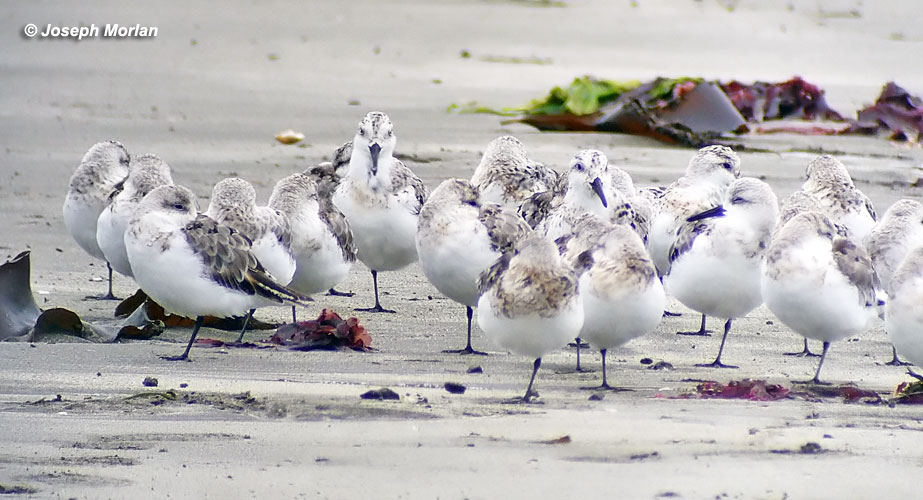
This species has one of the most cosmopolitan ranges of any bird, being found during migration and winter along all the coasts of all the continents of the world except Antarctica. It breed in the high arctic. Again, these birds are adults molting into winter plumage. The brownish smudging on their chests and is a remnant of breeding (alternate) plumage. The winter (basic) plumage is all white below and uniformly pale gray above.
The Sanderling is a highly gregarious species, often seen in dense flocks chasing waves along sandy beaches. However, where food is less dense, they may establish foraging territories which they defend from other Sanderlings. Their foraging regime is strongly effected by the tide. When the tide is high, they often congregate in tight roosts such as this where they sleep, standing on one leg while waiting for the tide to recede.
In this photo you can see that their feet are located directly below the center of gravity on each bird. Thus their legs angle inward on each bird for support and for balance. Many birds sleep on one leg. One possible explanation is that it helps prevent heat loss. There's an old joke that goes, "Why do Sanderlings stand on one leg? Because if they raised both legs they would fall down."
Digiscoped with Panasonic DMC-LZ5 | Nikon FieldScope 3 | 30X WA | hand-held (no adapter)